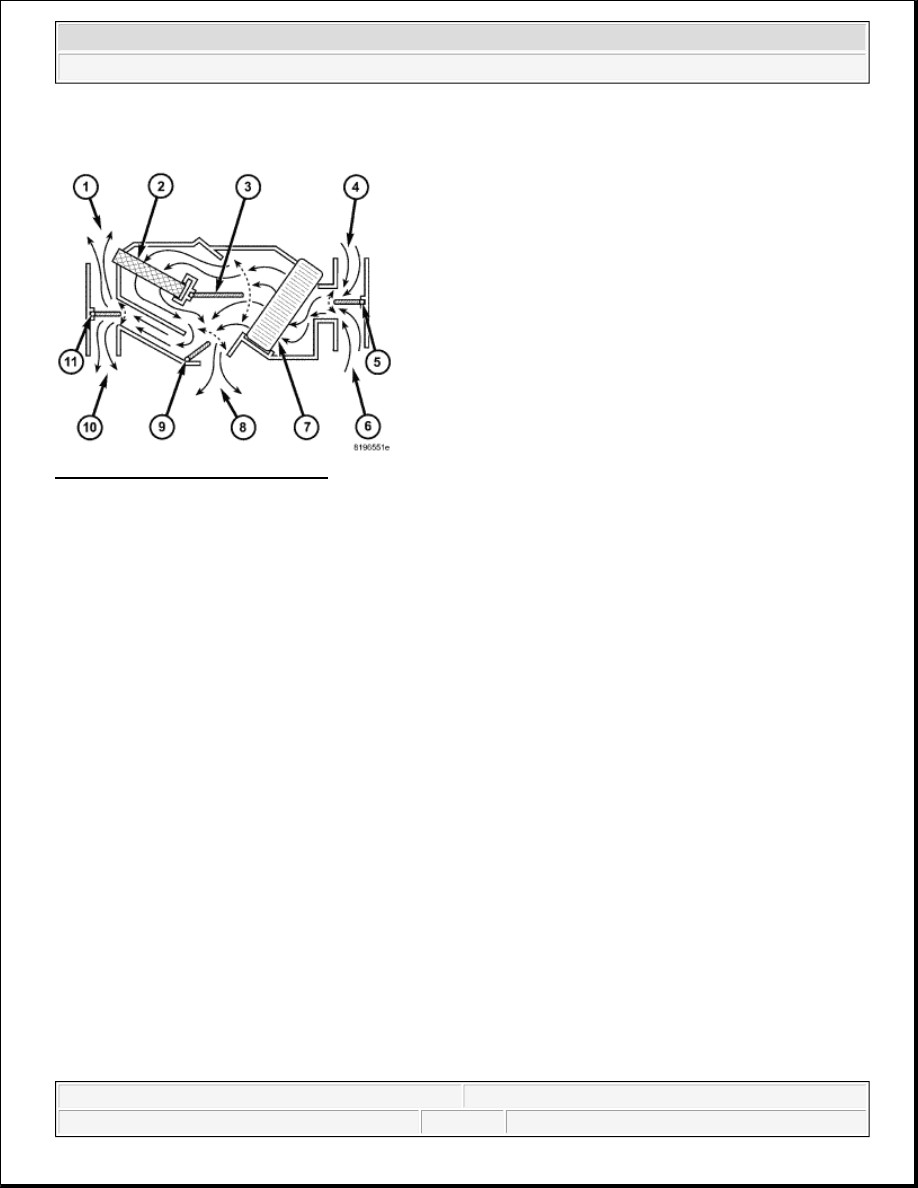Dodge Nitro. Manual - part 729

output air temperature.
Fig. 2: Blend Air System Schematic
Courtesy of CHRYSLER LLC
The heating-A/C system pulls outside (ambient) air through the fresh air intake (4) located at the cowl panel at
the base of the windshield and into the air inlet housing above the heating, ventilation and air conditioning
(HVAC) housing and passes through the A/C evaporator (7). Air flow is then directed either through or around
the heater core (2). This is done by adjusting the position of the blend-air door (3) with the temperature control
located on the A/C-heater control in the instrument panel. Air flow is then directed out the floor outlet (8),
instrument panel outlet (10) or the defroster outlet (1) in various combinations by adjusting the position of the
mode-air doors (9 and 11) using the mode control located on the A/C-heater control. The temperature and mode
control uses electrical actuators to operate the air doors.
The velocity of the air flow out of the outlets can be adjusted with the blower speed control located on the A/C-
heater control.
The fresh air intake can be shut off by pressing the Recirculation button on the A/C-heater control. This will
operate the electrically actuated recirculation-air door (5), which closes off the fresh air intake. With the fresh
air intake closed, the conditioned air within the vehicle is pulled back into the HVAC housing through the
recirculation air intake (6).
The A/C compressor can be engaged by pressing the A/C (snowflake) button on the A/C-heater control when
the mode control is set in any floor to instrument panel position. The A/C compressor will automatically engage
when the mode control is set in any Mix to Defrost position. This is done to help reduce fogging of the front
windows by removing humidity from the conditioned air prior to it coming into contact with the windows.
The defroster outlet receives airflow from the HVAC housing through the molded plastic defroster duct. The
airflow from the defroster outlet is directed by fixed vanes in the defroster outlet grille and cannot be adjusted.
NOTE:
Typical blend-air type HVAC system shown.
2007 Dodge Nitro R/T
2007 HVAC Heating & Air Conditioning - Service Information - Nitro